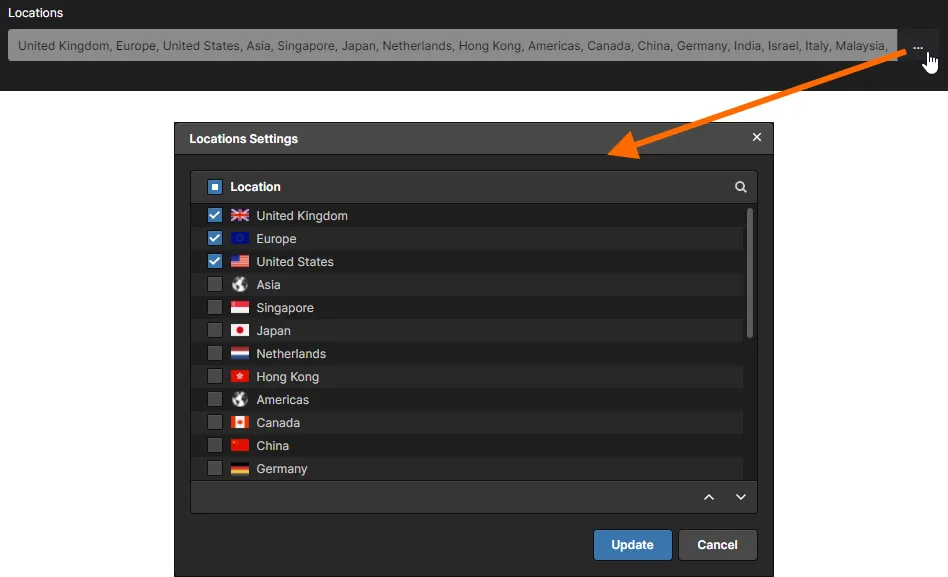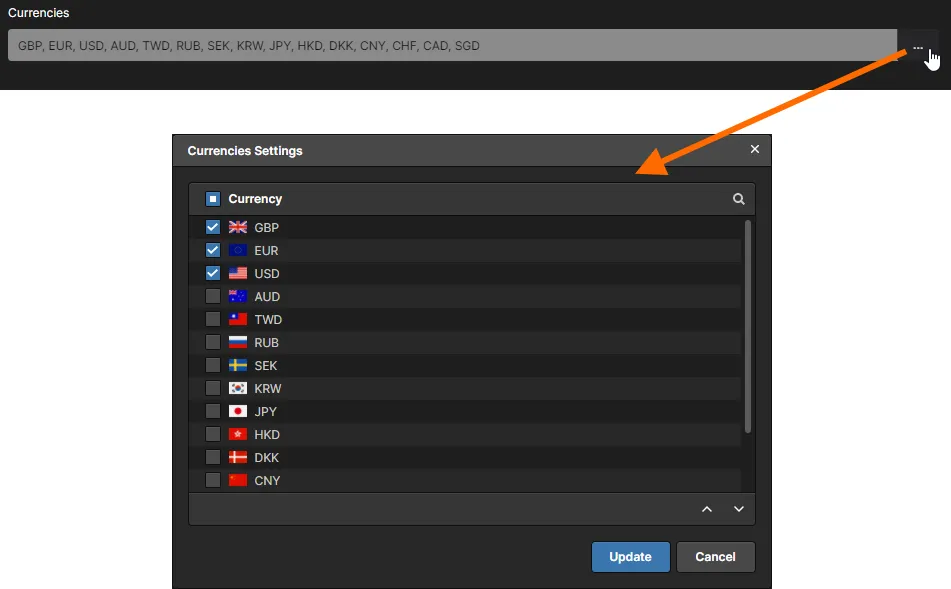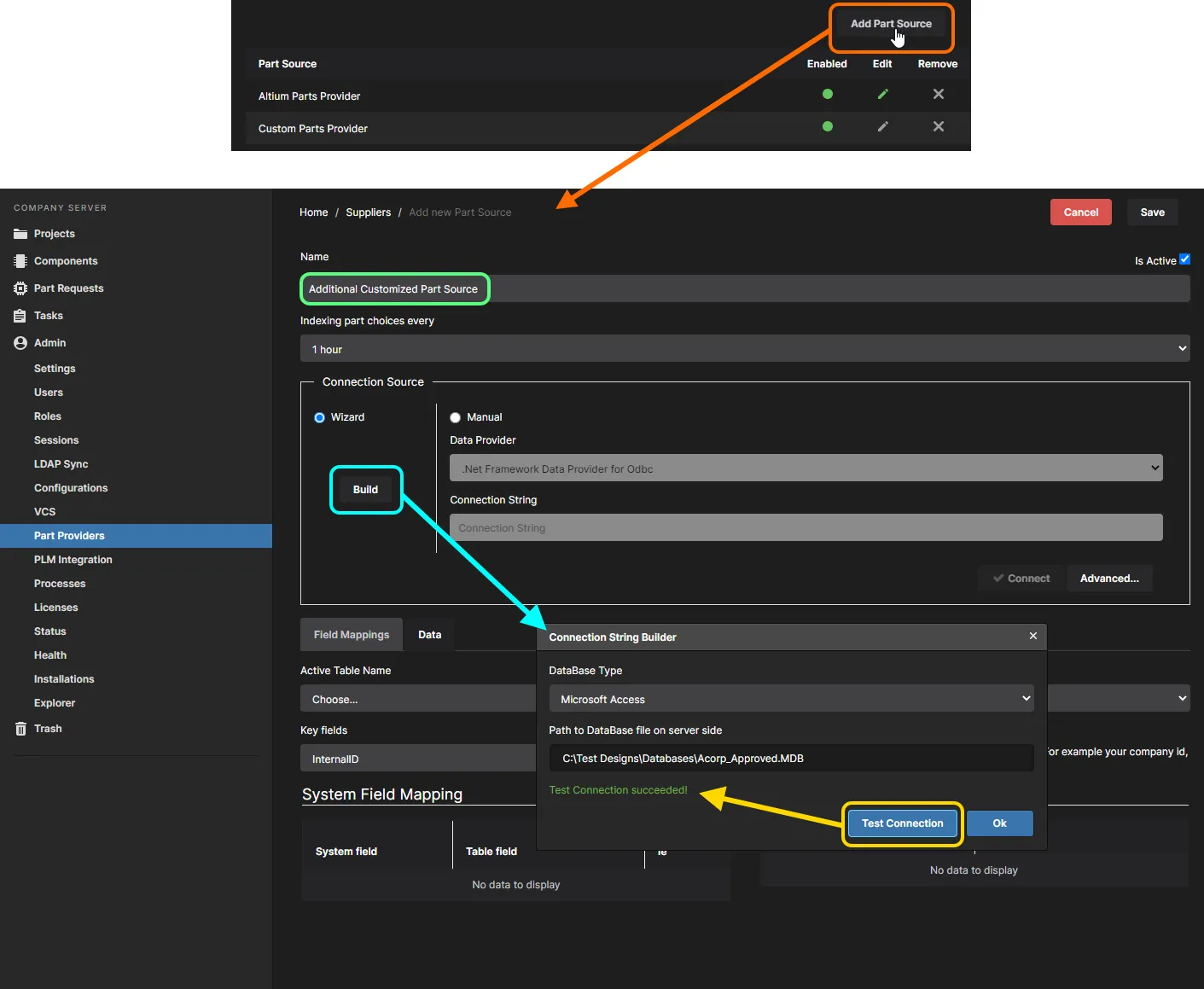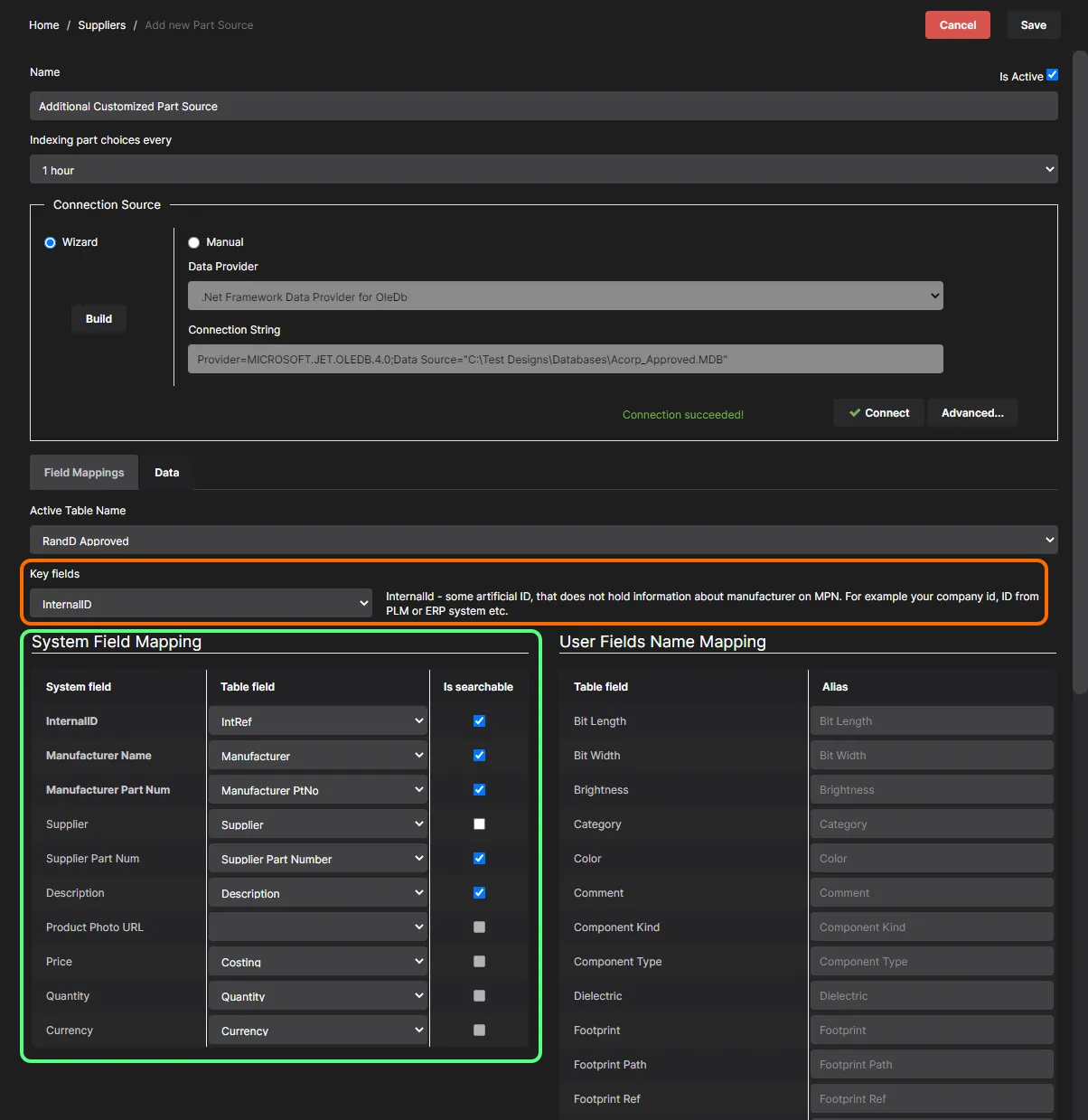Parent page: Configuration
Each Enterprise Server Workspace has its own dedicated Part Catalog. This is a local part catalog database, dedicated to the management and tracking of manufacturer parts and their associated supplier parts. The catalog is installed as a service (Part Catalog Service), provided through the Enterprise Server and works only with the Workspace.
The local Part Catalog stores items representative of actual Manufacturer Parts, along with one or more items representative of Supplier Parts – the incarnations of those Manufacturer Parts, as sold by the Suppliers/Vendors. Each Supplier Part is a reference to an item in a parts database – either the aggregate parts database of the Altium Parts Provider (which itself interfaces to, and gathers the parts from, enabled Suppliers), or a linked local parts database.
Which Suppliers are actually used – a list of Approved Suppliers – is managed by the Workspace through the Part Providers page of its browser interface. This facilitates centralized supply chain management, with designers across the entire organization using the same approved list of Suppliers with which to source supply chain intelligence for parts used in their designs.
Accessing Supply Chain Part Sources
Supplier link data sources are added and configured in the Workspace through the Part Providers page (Admin - Part Providers) of its browser interface.
Access to, and management of, the Part Sources and list of Approved Suppliers for a Workspace, can only be performed by an administrator of that Workspace.
 The Part Providers page allows you to determine which part sources are enabled - the source(s) of supply chain data.
The Part Providers page allows you to determine which part sources are enabled - the source(s) of supply chain data.
The following part sources are available for a Workspace:
- Altium Parts Provider – an aggregate supplier data service that provides access to live component information from a comprehensive range of parts suppliers.
The Altium Parts Provider settings that are established in the Workspace will override those in Altium Designer when a user connects to the Workspace.
- Custom Parts Provider - for situations where component supplier data is (and must be) sourced from an internal company enterprise system that provides a proprietary set of parts supplier data, which might be based on a tightly approved range of vendors and/or special pricing structures. This part source is actually configured for synchronization through Altium Designer - using a Custom Parts Provider Synchronization Configuration document (*.PrtSync) - allowing the supplier data from a specified database source to be mapped to the Workspace supply chain data.
- Additional Customized Part Source – for situations where parts supply data needs to be accessed from a local database, such as a company’s internal parts database, the Workspace's Custom Database Parts Provider feature offers interface connectivity for all common database systems (directly, or via an ODBC or OLE-DB interface). The connection can be established manually, through a nominated interface and connection string, or by using the Workspace’s Connection Wizard. Any number of such connections can be defined.
A database connected to by the Custom Database Parts Provider interface system must be locally available to the Workspace – that is, the database itself must be located on the PC that hosts the Workspace. In addition, for Altium Designer to be able to interface to any custom parts database connection, the Custom Data Synchronization option must be enabled (on the Configure Platform page (under Importers\Exporters)).
For database connectivity, the Parts Provider Synchronizer requires access to the 64-bit version of the Microsoft OLE DB Provider.
Database connectivity and problem solving
The required 64-bit version of the Microsoft OLE DB Provider is available on the host PC if:
In situations where a 32-bit version of Microsoft Access is installed however, the operating system will not accept the 64-bit Access Database Engine installation. This can be resolved using a specific installation procedure (a 'passive' install), or depending on the PC's software configuration, through other solutions.
► See Using Database Libraries with 32-bit and 64-bit Altium Design Software on the same Computer for full information on the options available.
The actual supply chain intelligence – comprising Manufacturer (and part number), Supplier (and part number), Description, Pricing and Availability – is sourced from the Workspace's local Part Catalog and the relevant part source.
Use the associated icon in the
Enabled column to toggle the state of the part source between enabled (

) and disabled (

). A window will appear asking for confirmation - click

or

respectively. Note that both
Altium Parts Provider and
Custom Parts Provider sources can be disabled, but cannot be removed. The latter can also not be edited. To remove an additional customized part source, click the
Remove control (

).
Configuring the Altium Parts Provider
To configure the available suppliers for the Altium Parts Provider source either click on its name, or its associated edit control ( ). The detailed configuration page will be presented:
). The detailed configuration page will be presented:
 The configuration page for the Altium Parts Provider part source.
The configuration page for the Altium Parts Provider part source.
Options to configure include the following:
- Locations – enable which geographical regions the parts service will collate parts data from. While many suppliers are multi-regional, if a part is uniquely available in a specific location, it will only be listed if that region is enabled. Click the
 button to access the Locations Settings window, from where you can specify which locations are to be used (enabled) and also change priority, so that search results from preferred locations are returned first. With any changes made, click the
button to access the Locations Settings window, from where you can specify which locations are to be used (enabled) and also change priority, so that search results from preferred locations are returned first. With any changes made, click the  button.
button.
Quickly toggle all locations between enabled (

) and disabled (

) using the control to the left of the
Location header.

- Currencies – enable which international currencies will be available for selection when searching for parts and examining results. Click the
 button to access the Currencies Settings window, from where you can specify which currencies are to be used (enabled) and also change priority. With any changes made, click the
button to access the Currencies Settings window, from where you can specify which currencies are to be used (enabled) and also change priority. With any changes made, click the  button.
button.
Quickly toggle all currencies between enabled (

) and disabled (

) using the control to the left of the
Currency header.

- Suppliers – enable which Suppliers to include when performing a supplier data search. Only part results from those Suppliers will be returned. By including more Suppliers for use with the feature, you are able to compare and shop for the best deals on the components required by your design.

Working with the Suppliers grid:
- Suppliers can be filtered using the field at the top of the list, allowing you to quickly browse the large range of available Suppliers more easily.
- Use the associated icon in the Enabled column to toggle the state of the Supplier between enabled (
 ) and disabled (
) and disabled ( ).
).
- Use the icon to the right of the Enabled column header to quickly enable or disable all Suppliers.
- Use the Show Verified only option to present only those Suppliers that are Verified. This means that a Supplier is a partner of the aggregator service that underlies the Altium Parts Provider, has proven to own its own stock, and its data feeds are real (considered trustworthy).
- Use the Show Enabled only option to present only those Suppliers that are currently enabled (
 ).
).
Configuring a Custom Database Part Source
When enabled in Altium Designer, the Custom Data Synchronization feature will port component data information from a parts database interface connection that has been set up in the Workspace. The database accessed by the Workspace is typically an internal company parts reference that offers data such as company and manufacturer part numbers, along with other parametric information that is specifically relevant to the organization.
With the exception of enabling the Custom Data Synchronization option in Altium Designer (on the Configure Platform page (under Importers\Exporters)) and being connected to the Workspace, no setup is required in Altium Designer to access that supplier data. All ODBC, OLE-DB, SQL etc connections to parts databases are managed by the Workspace.
Database Provider Setup
The connection to a company's internal parts database can be established manually, through a nominated interface and connection string, or by using the Workspace’s Connection Wizard – which automatically determines the interface and connection string.
The database must be locally available to the Workspace. That is, the database itself must be located on the PC that hosts the Enterprise Server.
To initiate the database connection setup, click the  button, at the top-right of the Part Providers page. The Add new Part Source page will present. Enter a Name for the new source and then select the Manual- or Wizard-based approach to establish the database link.
button, at the top-right of the Part Providers page. The Add new Part Source page will present. Enter a Name for the new source and then select the Manual- or Wizard-based approach to establish the database link.
The Wizard, activated by the  button, simply requests the type and location of the database you wish to connect to. It also allows the connection to be tested for confirmation that the database has been successfully accessed.
button, simply requests the type and location of the database you wish to connect to. It also allows the connection to be tested for confirmation that the database has been successfully accessed.

A Workspace database connection can be made manually by entering the interface method and connection string, or by running the Connection Source Wizard.
With connection testing successful, click the  button in the Connection String Builder window – connection to the database will be made, as verified by the
button in the Connection String Builder window – connection to the database will be made, as verified by the  button changing to
button changing to  , and the string Connection succeeded! displayed to its left.
, and the string Connection succeeded! displayed to its left.
When using the Connection Wizard to target an Excel spreadsheet in the XLSX (workbook) format, select Microsoft Excel 2007 as the Database Type. For the XLS spreadsheet format, choose the Microsoft Excel option.
Manual Connection
The database connection Wizard provided by the Workspace’s Add new Part Source page is a simple and quick way to establish the connection to a local Parts Source database, and should suit most situations. When the target database type and its connection requirements are less straightforward, the Manual connection method may be needed.
In this case the (.Net) Data Provider setting and its Connection String are manually specified, as determined by the target database. See the Connection Strings reference for helpful information on creating connection strings for a wide range of databases.
Further SQL connection options are available in the Advanced Settings window, opened with the  button.
button.

The Advanced Settings window offers fields for Left and Right Quote Character settings, which need to be correct to allow the system to successfully build SQL queries. Note that different database systems will use a different set of characters, for example:
- MsSQL, Access and Excel use the square bracket pair:
[ ]
- Oracle uses the double quote:
"
- MySql uses the character:
`
The Advanced Settings window also offers an optional field for defining a case insensitivity function for the database (Function name for ignoring case-sensitive), which might include the UPPER keyword for example.
Manual Connection Examples
Access database:
- Data Provider – select the .Net Framework Data Provider for OleDb option.
- Connection String – specify
Provider=MICROSOFT.JET.OLEDB.4.0;Data Source=myDatabase.mdb (where myDatabase.mdb is the name/path the local database file). See the Access 2000 connection template guide.
- Advanced Settings – the Quote Characters are the
[] pair (no change required, as this is the default setting).
MySQL database:
- Data Provider – select the
.Net Framework Data Provider for MySQL option.
- Connection String – specify
Server=myServerAddress;Database=myDataBase;Uid=myUsername;Pwd=myPassword; (where myxxx represents the server name, database name and the login credentials for the local MySQL database). See the MySQL connection template guide.
- Advanced Settings – set the Quote Characters to
`
With the Data Provider, Connection String, and any advanced settings defined as required, click the  button to connect to the database. If the connection is successful, the button will change to
button to connect to the database. If the connection is successful, the button will change to  , and the string Connection succeeded! displayed to its left. If there is an issue, the button will remain in disconnected mode (
, and the string Connection succeeded! displayed to its left. If there is an issue, the button will remain in disconnected mode (  ), and information about why the connection is failing will be presented to the left (e.g. The 'MICROSOFT.JET.OLED.4.0' provider is not registered on the local machine).
), and information about why the connection is failing will be presented to the left (e.g. The 'MICROSOFT.JET.OLED.4.0' provider is not registered on the local machine).
Part Choice Re-indexing
After modifying data in a defined Part Source – for example changes in the existing connected company parts database, or pointing to a different database – that Part Source should be re-indexed, so that searching for components can be optimized for speed. This entails re-indexing the part choices for that Part Source.
Use the Indexing part choices every field to specify an automated re-indexing interval. A range of intervals are provided, from every minute, up to every 10 days. The default interval is 1 hour, but if you don't want this automated re-indexing to occur, set the field to None.
When viewing a saved (and defined) Custom Part Source, you will be given the opportunity to rebuild the search index at any time, manually, by clicking the

button. You can also perform a manual re-indexing of the part choices for one or more specified (custom database) Part Sources, by using the command line based configuration tool –
avconfiguration.exe. For more details, see
Command Line Management Tool.
Database Table Access
The completion of the Manual or Wizard process establishes the correct Database interface and connection string. Since a single database can include multiple tables and database elements, the required table data must be selected for access through the Active Table Name drop-down menu. Note that a single database could contain several tabular variations of Manufacture Part Number information, for example.

Once the database connection is established, the correct table data within the database must be nominated.
With the database and its constituent table connections established, its contents are viewable under the Data tab, which can be used as a guide to mapping the database fields to the Workspace Part Source fields.

The Data tab provides a direct view of the connected database table contents.
The connected database Field data is mapped to the Workspace Part Source System Field data via the comparative column listings under the Field Mappings tab, which allows the database entries to be assigned to matching Data Provider entries in the Workspace. The system will automatically link equivalent field names, while the drop-down list on each entry can be used to manually select a suitable field – in the below screen image, the Costing database field is being mapped to the Price system field, the Manufacturer PtNo to Manufacturer Part Num, and so on. A field may also be disabled from the parts searching process.

Map the main System Fields to comparative fields in the source database, so that searches will behave as expected and suitable Manufacturer/Supplier information will be returned.
Note that an ID reference field must be nominated as a key index field (Key Fields) for the database mapping – this would normally be a proprietary ID that is unique to each entry, such as an internal company part number. Once the System Fields have been suitably mapped to the connected database, click the  button at the top-right of the page to save the Part Source configuration.
button at the top-right of the page to save the Part Source configuration.
The User Fields Name Mapping region lists all other table fields in the connected database. Should you wish to specify any alias for such a field, enter it into the associated Alias field. By default, the alias value will be set to the name of the table field, so if no aliasing is required you can ignore this region.

The completed data field mapping process will provide live database data to the Workspace and the Custom Data Synchronization interface. The setup can be subsequently edited as required.
When viewing a saved (and defined) Custom Part Source, you will be given the opportunity to rebuild the search index at any time, manually, by clicking the

button. To edit the Part Source, click the

button.
Accessing Custom Database Parts Information
If a database Parts Source is enabled for use in the Workspace, the custom parts database connected by that part source will be available as a source of Manufacturer/Supplier information in Altium Designer, when connected to the Workspace.
This can be seen in the Add Part Choices dialog, accessed when performing the following in Altium Designer:

Parts Database information sourced through the Custom Data Synchronization interface, including localized Pricing and Quantity data, is available to the ActiveBOM document and to new/existing Workspace library components, when adding/defining a Part Choice.
Note that the Pricing and Stock information is determined by the data extracted from the central database table, which is connected through the Custom Data Synchronization interface.
A Word About...Supplier Preferences
The Data Management – Parts Providers page of the Preferences dialog is command-central for configuring which Suppliers will be available when searching for parts data, along with other options relating to linking to Supplier data. When connected to the Workspace from Altium Designer, the Altium Parts Options region becomes read-only and adopts those settings defined for the Workspace (specifically, the Altium Parts Provider parts source, within the Part Providers area of the Workspace's browser interface). Text will appear above the section to remind you of this. Refer back to the section Configuring the Altium Parts Provider for more information.
 While connected to the Workspace the Altium Parts Options section will simply be a read-only reflection of what has been centrally configured in that Workspace.
While connected to the Workspace the Altium Parts Options section will simply be a read-only reflection of what has been centrally configured in that Workspace.
When you make any changes to the Altium Parts Provider part source through the Workspace, you will need to sign out and back into the Workspace from within Altium Designer to refresh and see those changes on the Data Management - Part Providers page.